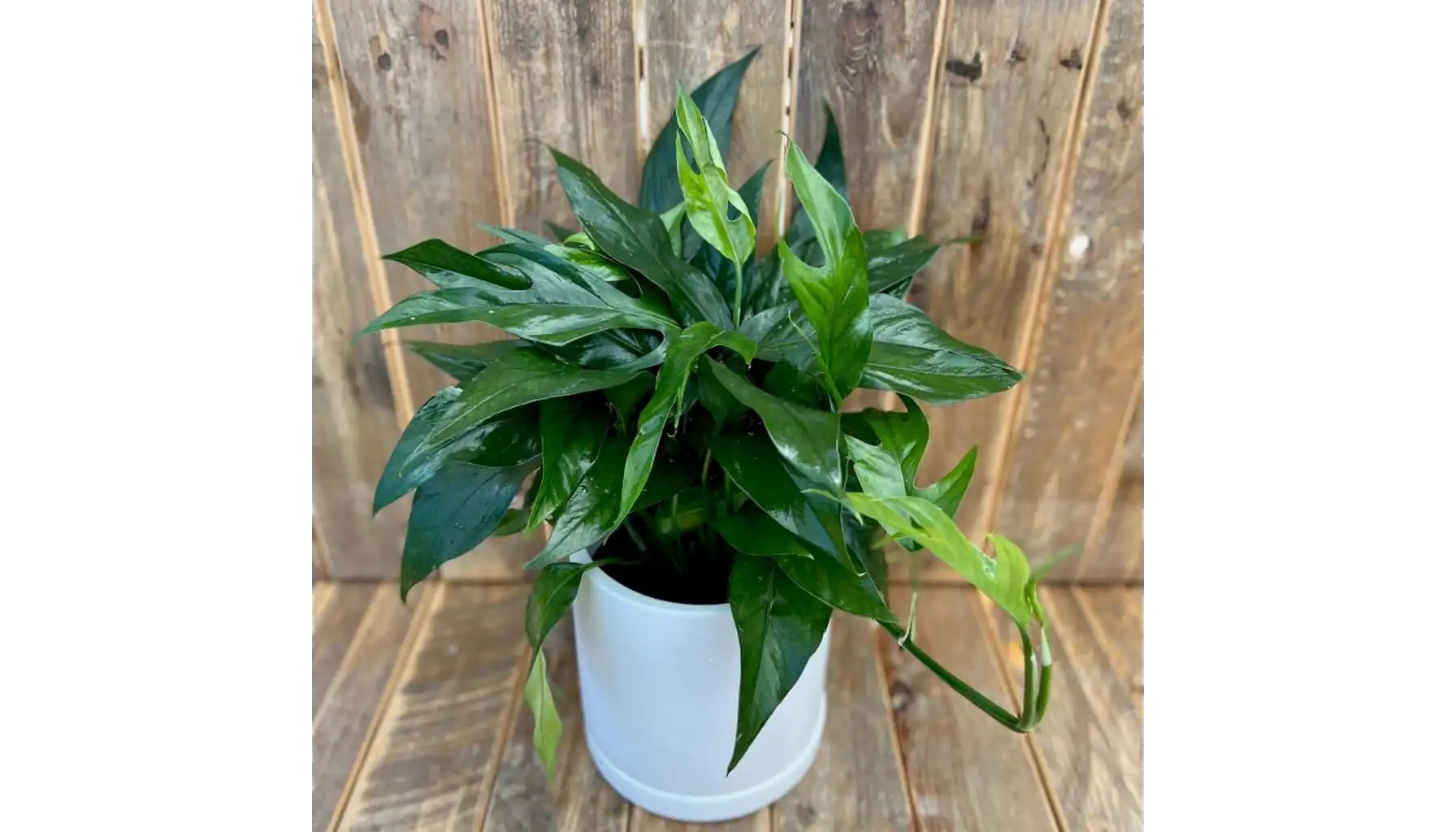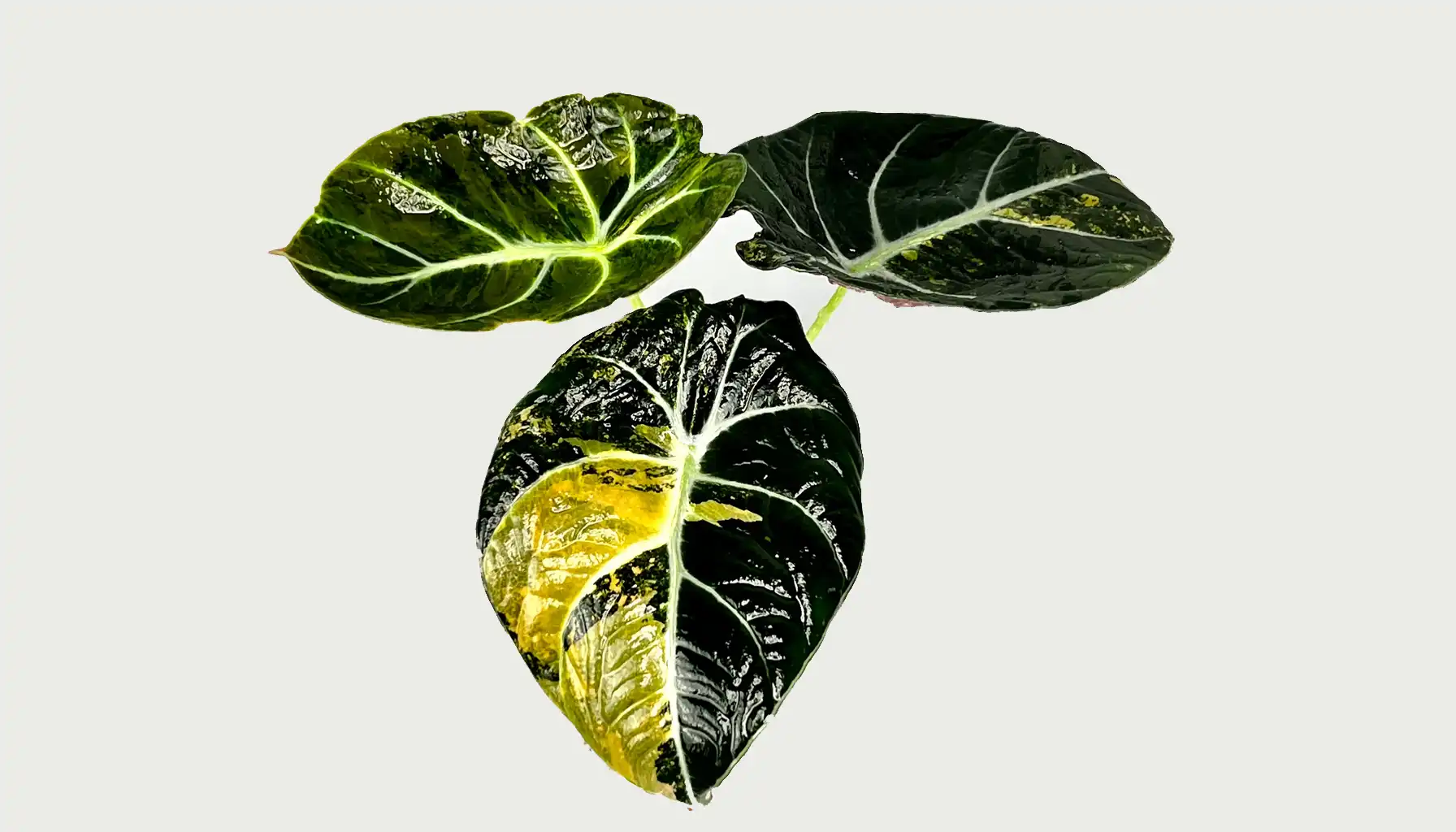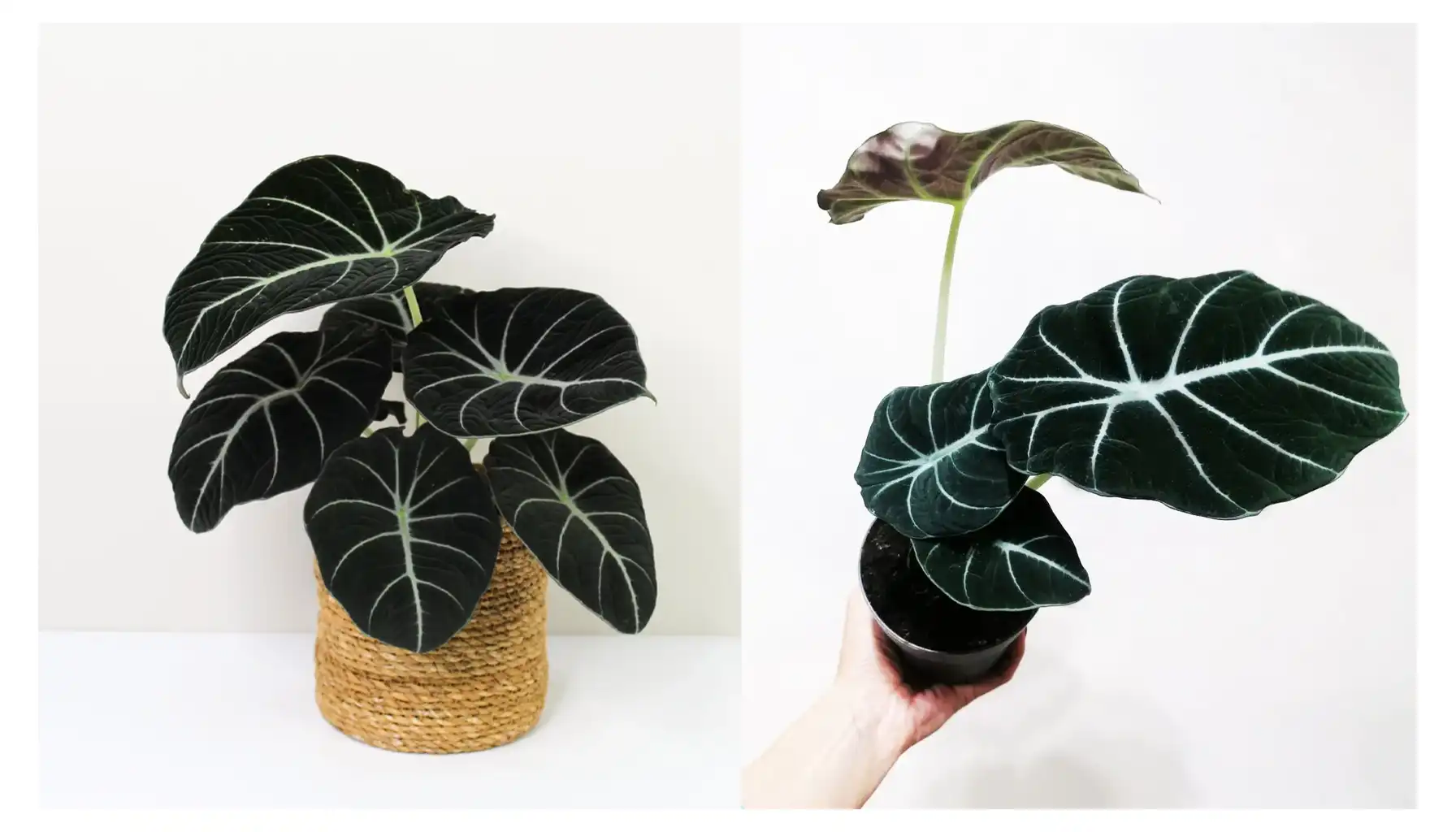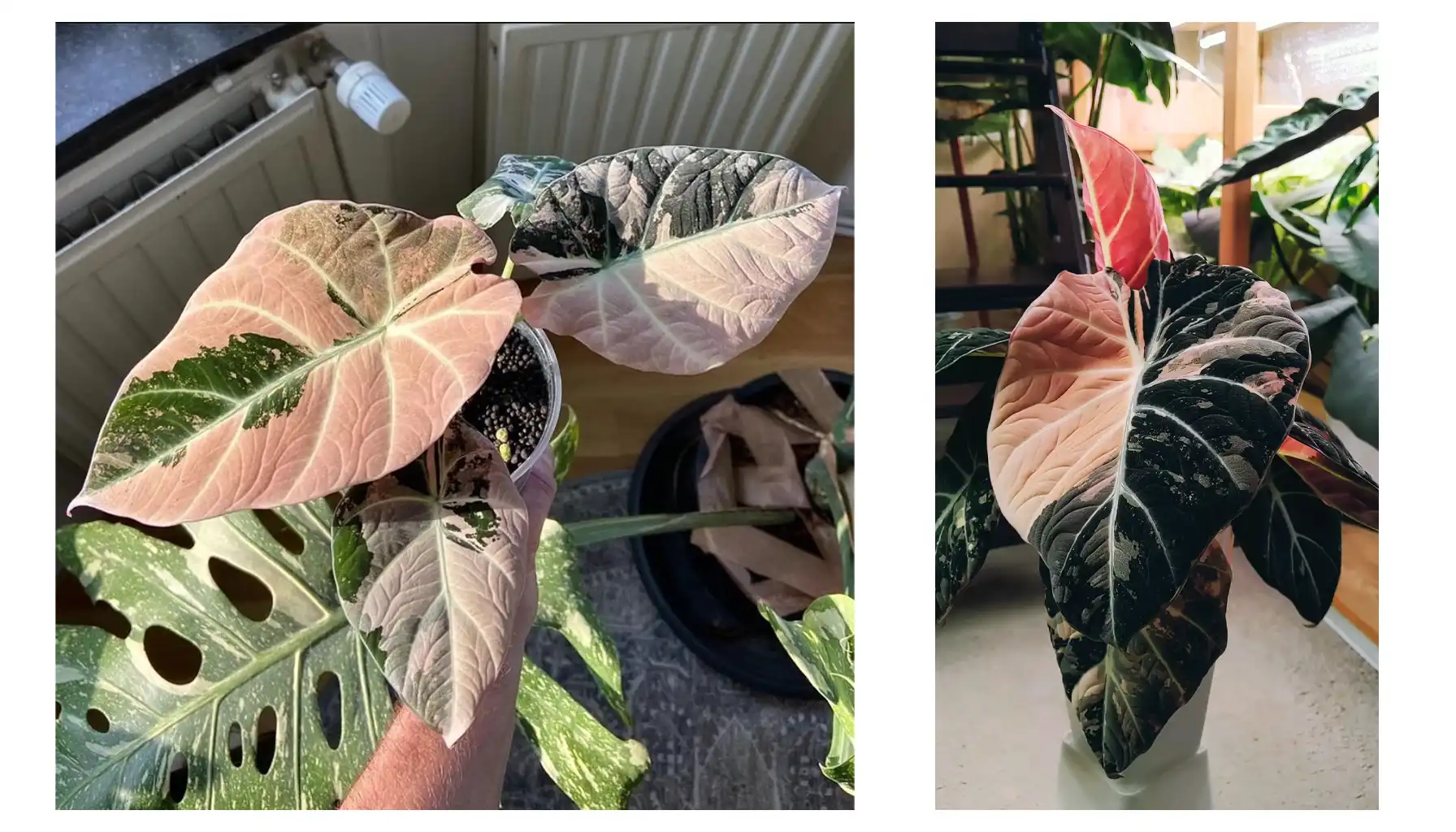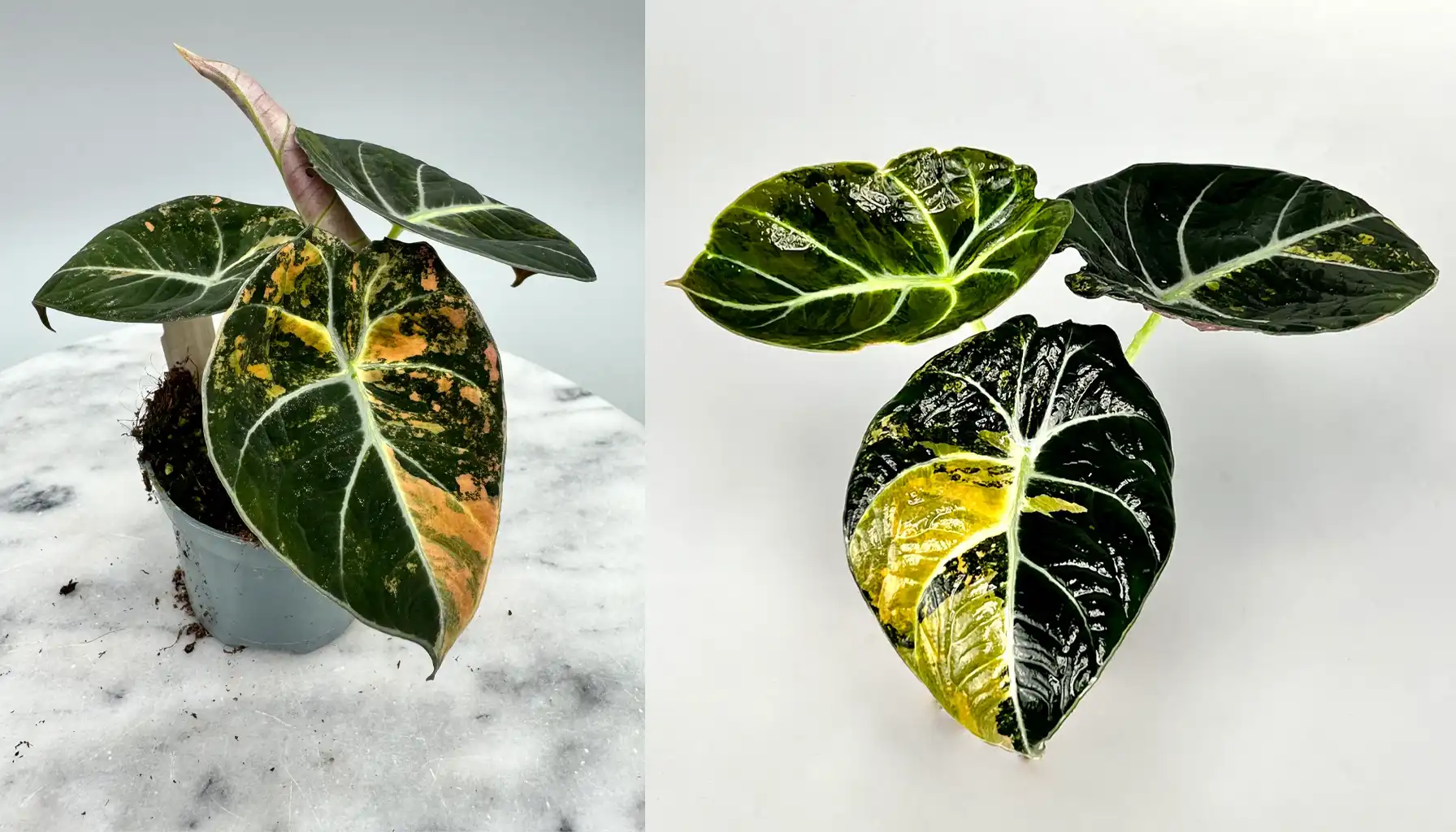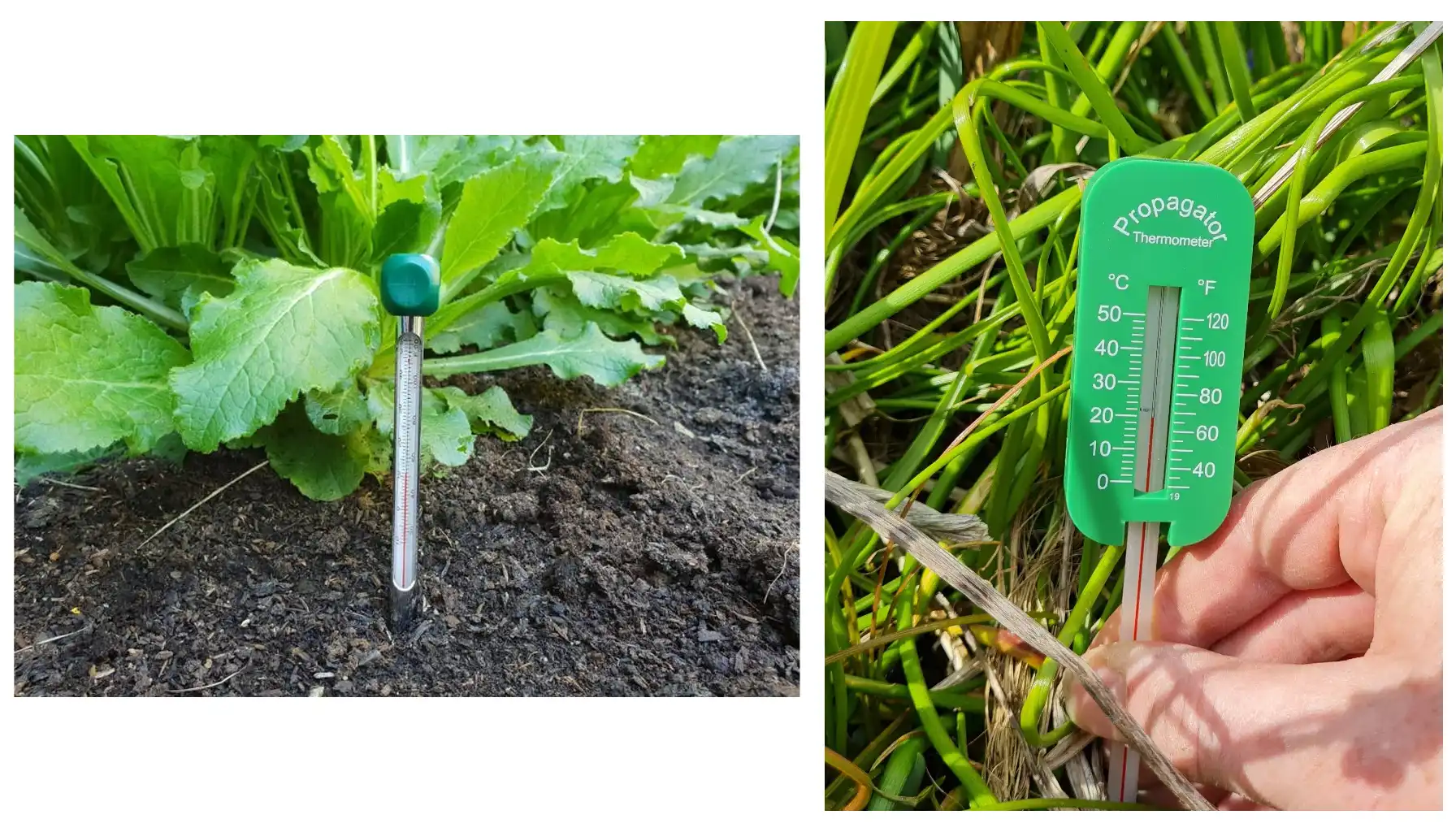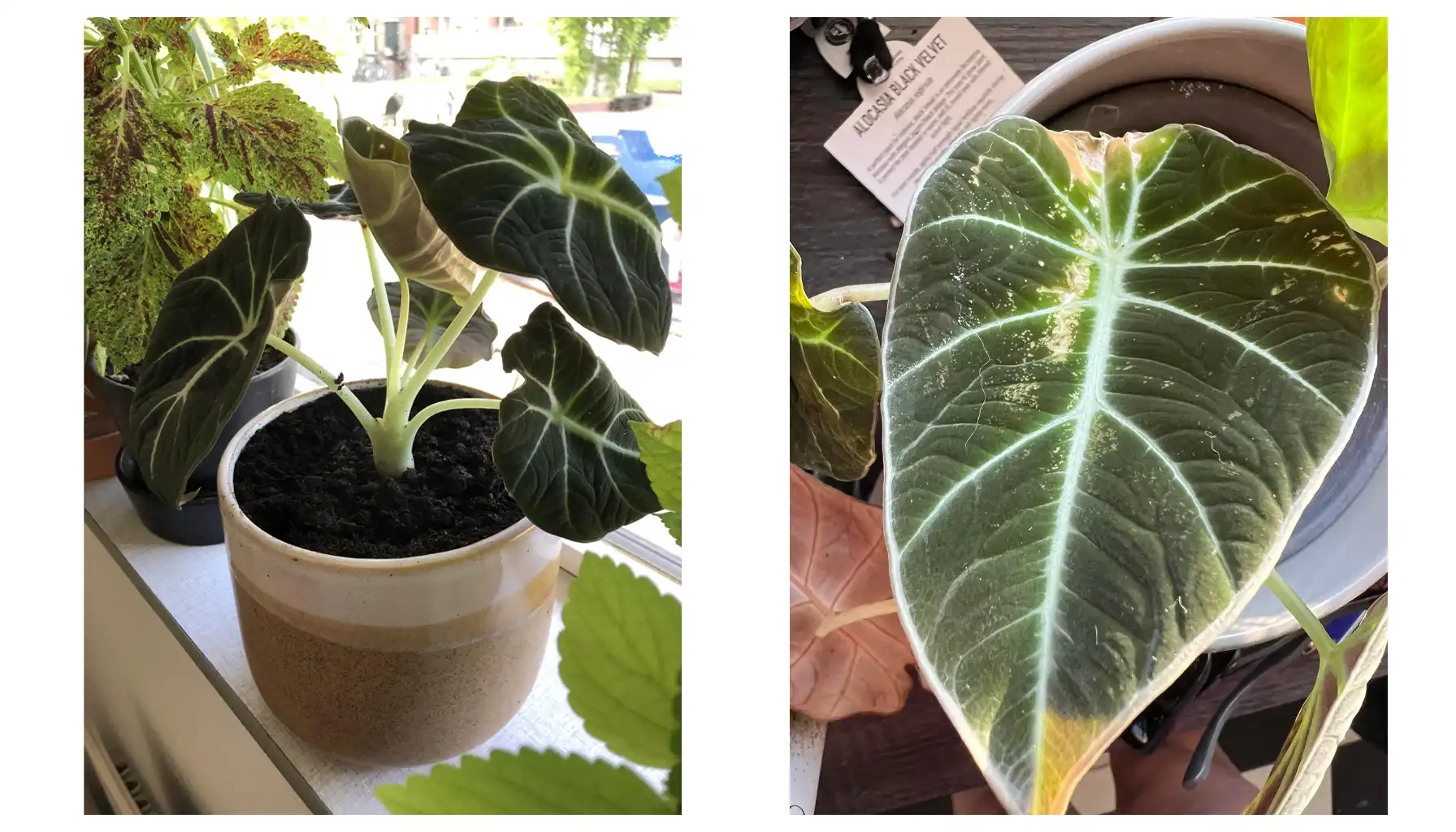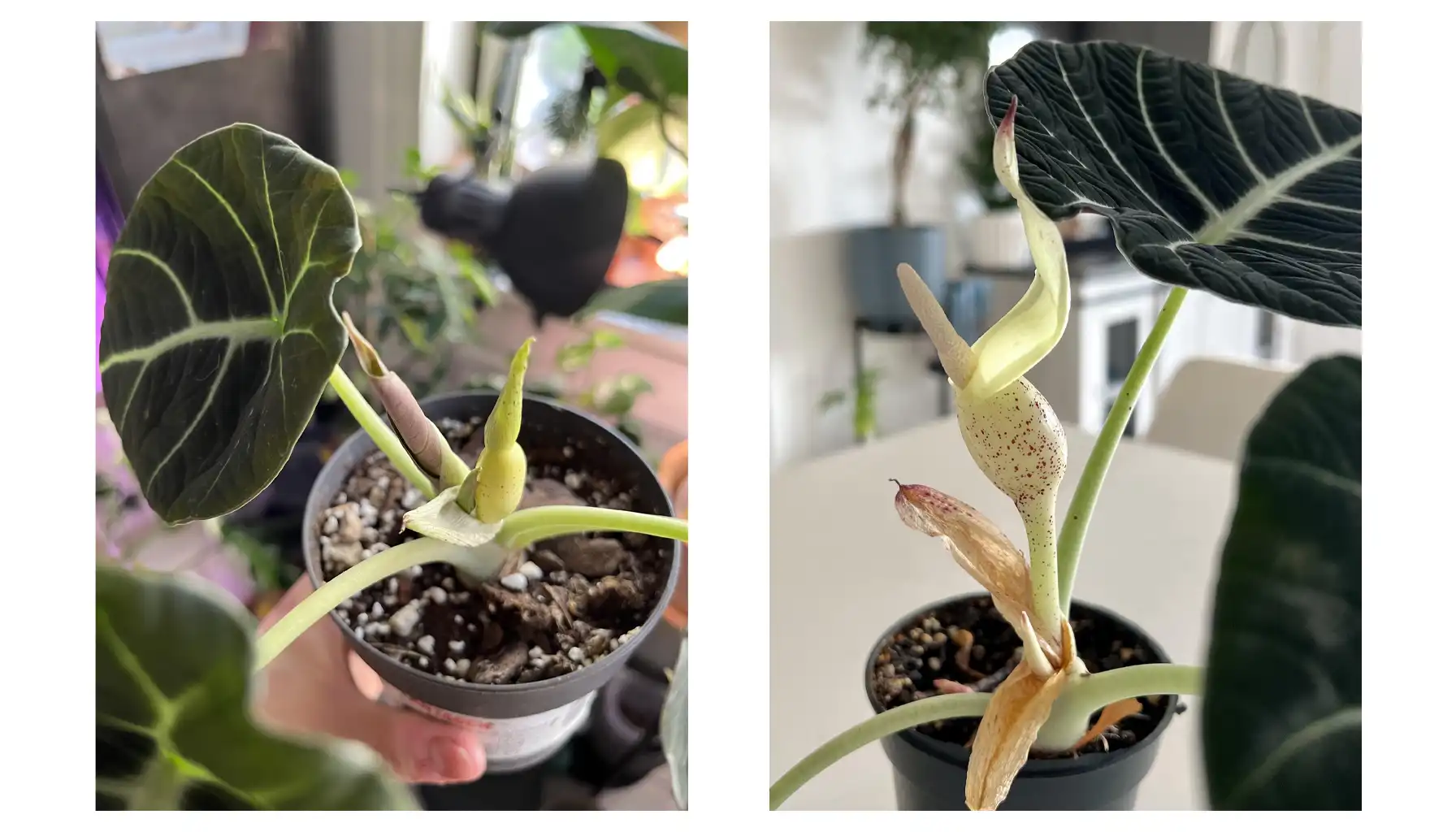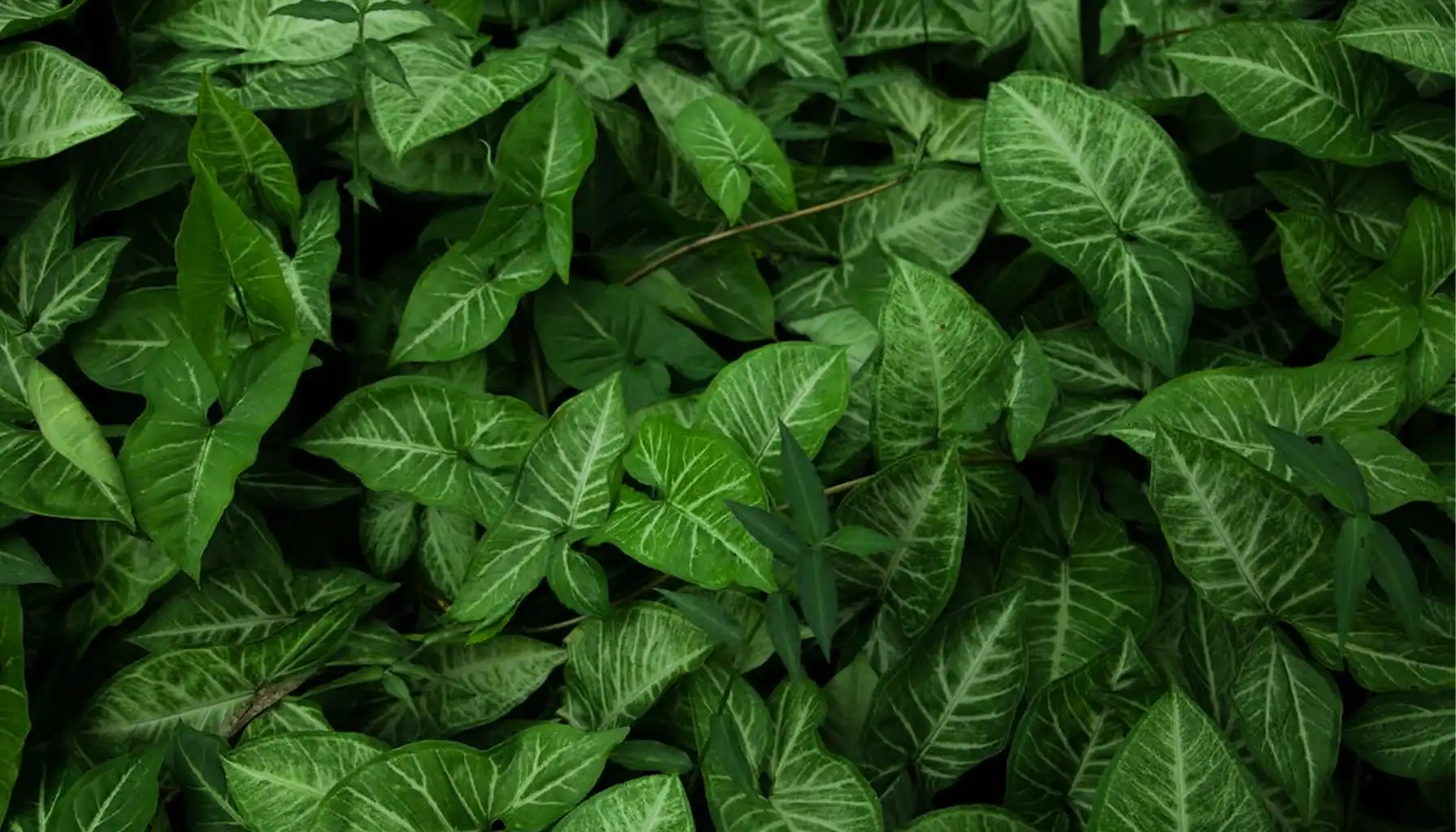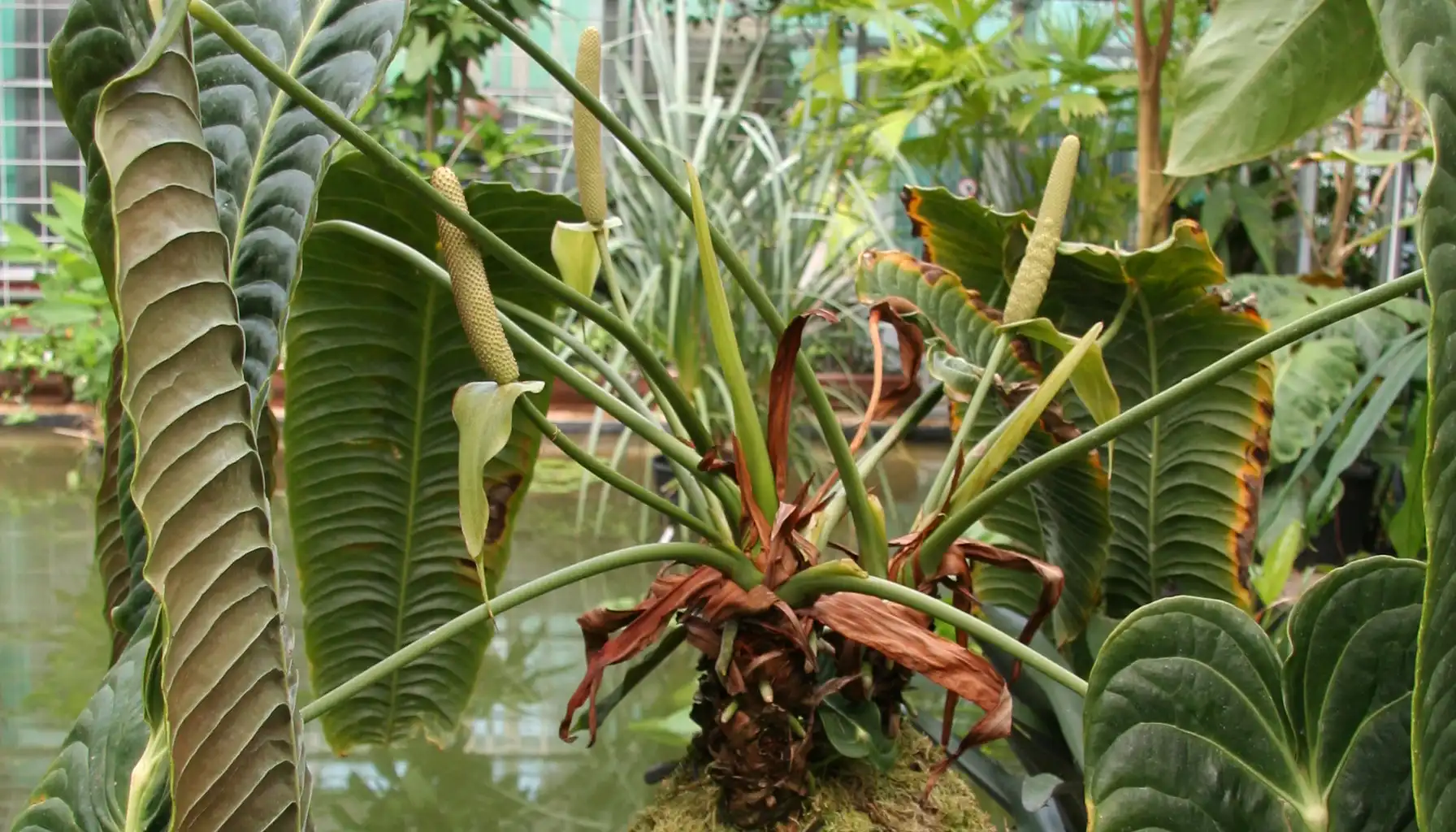Some people don’t want to try gardening because they consider all plants the same and boring. If you know people like that, show them Black Velvet Alocasia. Maybe this shrub will make them fall head over heels in love with gardening.
Here you will learn about light, watering, and overall care for this stunning plant. This shrub deserves the best, because it is the best.
Have you heard of a Plant scanner app? Such apps can recognize flora for you. Now you’ll know every flower and bush around you.
Alocasia Black Velvet Description
Alocasia reginula, more commonly known as Alocasia “Black Velvet, is a small, slow-growing plant from the Alocasia family, prized for its dramatic foliage. Its main function is ornamental, and some gardeners love to collect various Allocasia shrubs.
The name origin for Black Velvet is easy to understand, just look at the foliage. It’s not every day that you see leaves so black and fuzzy-looking.
Black Velvet Plant Overview |
Feature | Details |
Origin | Tropical rainforests of Borneo (Southeast Asia) |
Type | Evergreen tropical perennial |
Size | 10–15 inches (25–38 cm) indoors |
Life span | Several years to decades with proper care |
Leaf Colors | Deep black-green to nearly black |
Flowers | Small pale yellow or cream spathes (similar to Peace lily) |
Propagation | Division of rhizomes |
Toxicity | Toxic to pets (cats, dogs) and humans if ingested |
Special Features | Exceptionally ornamental |
Additional Varieties and Colorations
As expected from an ornamental plant, Black Velvet has several varieties, varying in color and size. Most Alocassais are a new addition. Some species were found in 2016 only, so scientists and breeders are still developing new cultivars.
Alocasia Pink Black Velvet
It’s a rare variegated form of Alocasia reginula. This Alocasia Black Velvet Pink variegated form features pink (often with white or mint) variegation that makes it highly sought-after in the collector world.
Pink Black Velvet Alocasia is not a naturally occurring variety, but rather a sport or variegated mutation. Through selection and breeding, scientists can increase the chances of Alocasia growing into a Black Velvet Pink Alocasia, but this variety is still quite unstable.
Alocasia Black Velvet Gold
It’s yet another variegated form of Alocasia reginula. Black Velvet Gold Alocasia is not a separate species, but a mutated cultivar of the classic Black Velvet, featuring striking gold/yellow variegation rather than the typical silver veins.
Just as the Pink Variegated Black Velvet Alocasia variety is rare, the Gold form is also very sought after. Gold and velvet go well together, for sure.
Alocasia Black Velvet Care
Alocasia has a picky reputation. Not all of them are as picky as most consider, but being ornamental plants comes with downsides. Mainly, if you don't take good care of this shrub, it will look bad, destroying its main purpose.
Don’t worry, we have a few tips for Black Velvet Alocasia care.
Light Requirements
Bright, indirect light is ideal for this shrub. Avoid harsh direct sunlight! It can scorch the variegated leaves. Scorch marks are usually white, contrasted by black foliage, so even a little scorch mark ruins the ornamental value.
Too little light will make growth slow and cause leaves to lose vibrancy.
Water Requirements
Keep the soil evenly moist, but never soggy. Let the top 1–2 inches of soil dry out before watering again.
Use room-temperature, dechlorinated water if possible. Overwatering is the most common killer for most shrubs.
Temperature Requirements
This flora thrives in a 65–80°F (18–27°C) range. Temperatures below 60°F (15°C) will either damage it or put it into hibernation. That's why it’s important to protect your plant from freezing during the winter. Placing the shrub away from frequently opened windows and places with drafts will help keep it alive.
Humidity Requirements
Tropical plants like humidity, and this shrub is no exception. Alocasia prefers 60–80% humidity. In dry environments, use a humidifier, pebble tray with water, or group it with other plants that could boost moisture.
Fertilizer Requirements
Want to help your shrub grow big and strong? You can feed it during the growing season (spring & summer) with a balanced liquid fertilizer at half strength every 4–6 weeks.
Skip or reduce feeding in fall/winter when growth slows.
Soil Requirements
The shrubs need a light, airy, well-draining mix, a common choice for most tropical plants like Aglaonema or Alocasia. Typically, this mix consists of 40% potting soil, 30% perlite or pumice, and 30% orchid bark/coco chips.
Common Problems
Nothing ruins the beauty of a plant as various diseases and problems. Gladly, this tropical shrub has problems most other house plants have. The problems that people already know how to deal with:
Yellowing Leaves. Caused by overwatering and poor drainage. The yellowed leaves are dying off rapidly. To fix this issue, check soil moisture. Allow the top 1–2 inches to dry before watering. Make sure the pot has drainage holes and a loose, airy mix, and remove fully yellow leaves to prevent spreading.
Brown, Crispy Leaf Edges. Caused by many minor caring mistakes: low humidity, excess direct sunlight, and underwatering. You can save the shrub by increasing humidity with a humidifier or pebble tray and moving it to bright indirect light.
Root Rot. One of the most dangerous ailments on the list. Caused by constantly soggy soil, poor drainage, or overly dense potting mix. To fix it, remove Alocasia from the pot, trim black, mushy roots, and repot in fresh, airy soil. Water only when the top layer feels dry.
Pests are another problem. Common culprits for Alocasia are:
Spider mites (leave fine webbing, speckled leaves).
Thrips (silver streaks, distorted leaves).
Mealybugs (white cottony clumps).
Aphids (yellowed spots on the leaves).
To get rid of these pests, you must first isolate the plant (to prevent cross-contamination with other shrubs). Wipe leaves with neem oil or insecticidal soap. These pests are persistent, but they can’t do much to defend themselves.
Alocasia Black Velvet Flower Bloom
The main attraction for this shrub is the foliage, and it blooms very rarely indoors. But when the conditions are right, you will see Black Velvet Alocasia flowers.
The flowers are very compact, protected by a sheath. Inside these creamy coloured flowers, the seeds are developing. In the wild, it’s a sign that the Alocasia Black Velvet full grown stage is reached.
It’s better not to expect that your indoor shrub will ever bloom, but if it ever does, you have the bragging rights: you made a plant from the tropics feel so at home that it believes it’s in a rainforest.
Toxicity and Safety
Black Velvet is a poisonous plant. It contains Calcium oxalate crystals, sharp, microscopic crystals inside the plant tissues. Many plants contain these crystals. For example, Dieffenbachia.
Ingesting such crystals induces:
Intense mouth, tongue, and throat irritation.
Burning sensation.
Swelling of the lips, mouth, and airway.
Excess drooling.
Difficulty swallowing.
Possible nausea or vomiting.
While such poisoning is not deadly, it will leave you and your pets with a very bad time, so keep the pot away from kids and curious pets.
Benefits and Use
What positives does Alocasia bring into your room and home in general?
Benefit | Description |
Ornamental Appeal | Alocasia Black Velvet's variegated leaves with silver veins are stunning. This shrub can become a focal point in any plant collection. |
Space-Friendly | Compact growth (10–15 in tall) fits well in small homes, apartments, or desk spaces. |
Collectible Value | Highly prized among plant enthusiasts. Rare variegated forms (pink, gold) can be valuable. You can use Alocasia Black Velvet for sale and make money. |
Mood Boost | Caring for plants can reduce stress and improve mood. |
Air Quality (Minor) | It can help slightly filter indoor air, though not a primary air purifier due to its size. |
AI Plant Finder
The AI Plant Finder is a free flora identification and care app.
The main function of this app is to help users identify plants by simply taking a photo. It provides instant identification results, detailed information on species, care tips, and disease diagnosis.
Another useful function is care reminders. The app will notify you when it’s time for watering and fertilizing. Consistency is the key everywhere, and for gardening too.
With this app, you’be the best gardener you’ll ever be. The AI Plant Finder is available for both iOS and Android devices.
Related AI Plant Finder Posts
